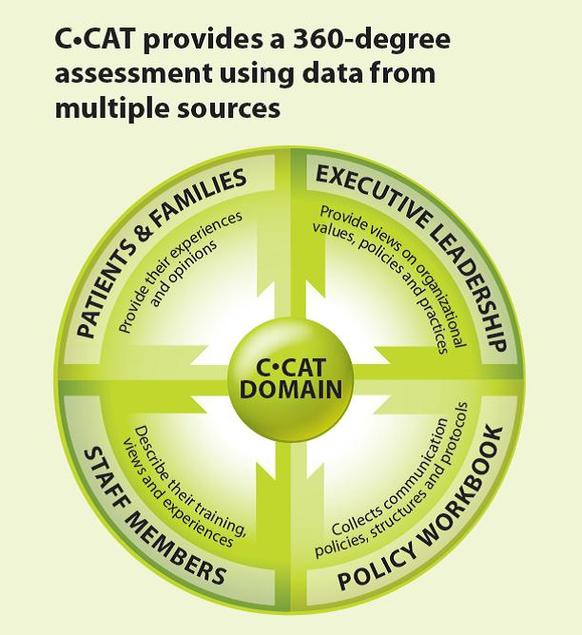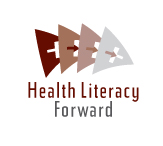The assessment that we now offer, called the Communication Climate Assessment Toolkit (CCAT), measures 9 domains that contribute to effective patient-provider communication and are strongly correlated to patient reported quality of care and trust in the healthcare provider. Expectations in each domain were
 developed
considering overall importance, feasibility of implementation, and potential for measurement. Hospitals and clinics who bring Health Literacy Forward in to facilitate the CCAT receive validated scores,
comparisons to national averages, and QI consultation in each of the
following domains:
developed
considering overall importance, feasibility of implementation, and potential for measurement. Hospitals and clinics who bring Health Literacy Forward in to facilitate the CCAT receive validated scores,
comparisons to national averages, and QI consultation in each of the
following domains:
- Leadership commitment
- Information collection
- Community engagement
- Workforce development
- Individual engagement
- Cross-cultural communication
- Language services
- Health literacy
- Performance evaluation
Learn more about CCAT at the AMA Ethical Force Website or just give me a call!
What's more, seven of the above nine domains were recently endorsed by the National Quality Forum (NQF) as leading measures of health disparities and cultural competency. This is BIG NEWS!! Check out the press release from NQF to learn more.
If you're wondering what the heck all this Health Literacy Forward talk is recently...I wrote this short summary just for you!
Health Literacy Forward, a program of the Literacy Coalition of Central Texas, provides quality improvement consulting and trainings for hospitals and clinics around effective health communication. While 75% of preventable readmissions result from miscommunication, Health Literacy Forward, a certified vendor-consultant of the American Medical Association, helps healthcare agencies reduce preventable readmissions, ensure compliance with accreditation and regulatory requirements, and improve patient-safety and reported quality of care.







